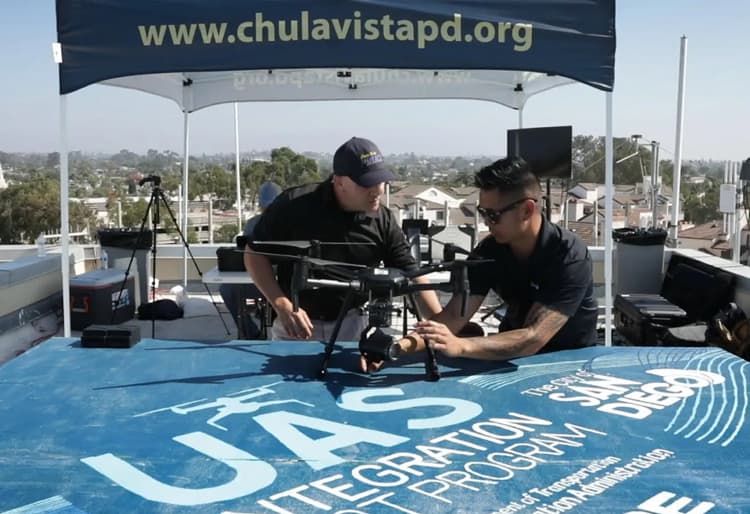Police Argue Drones are Part of Spy Network

By Alberto Garcia
Investigative Reporter
Police unions are coming out against a recent appeals court ruling regarding police drone videos and are now arguing the footage may be combined with other surveillance technologies monitoring the public.
The Los Angeles County Police Chiefs Association submitted a letter to the California Supreme Court in support of a petition of review filed by the City of Chula Vista which is seeking to overturn a recent appeals court ruling that videos recorded by police are not automatically exempt from disclosure under the California Public Records Act.
The police Union acknowledged what many privacy advocates fear is a growing deployment of surveillance systems compiling data on an unsuspecting public.
“The data can be integrated with other sources, such as public safety camera or satellite feeds and APLRs, and enhanced by analytical technologies, such as facial recognition software or other Al,” their letter states.
The case, known as Castañares v. City of Chula Vista, was filed in April 2021 by La Prensa San Diego Publisher Arturo Castañares after his request to review one month’s worth of videos was denied.
Castañares had asked for videos from March 2021 for a story regarding how the Chula Vista Police Department uses the new drones as the first local police agency in the US authorized by the FAA to fly beyond visual line of sight of the unmanned aerial vehicle, or UAV.
“We wanted to see how police use the new drones and whether they may be violating people’s privacy rights as they fly over thousands of homes around the City,” Castañares said.
Although a trial court sided with the police in April 2023, California’s Fourth District Appeals Court in San Diego ruled in late December that police cannot apply a blanket exemption to all videos without first reviewing them to determine if they are connected to investigations of crimes.
The Appeals Court decided that videos must be reviewed and then divided into three categories.
“(1) part of an investigatory file, (2) an investigation into whether a law has been broken absent any investigatory file; and (3) a factual inquiry. The first two categories are exempt from disclosure under section 7923.600, 27 subdivision (a). The third category is not. For the footage that falls under the third category, the City may then offer arguments as to why the catchall provision applies,” the Appeals Court ruled.
The opinion was published by the Appeals Court so it can be used throughout the state as a new precedent by others requesting police records until and unless the California Supreme Court rules differently.
The Police Officers Research Association of California (PORAC) also submitted a letter to the Supreme Court in support of Chula Vista’s petition but their argument is that compliance with the appeals court ruling could be so costly and time-consuming that some agencies may choose not to deploy drones at all.
“If this Court does not review the Questions Presented in this case, departments around the state will both be forced to assume that they either need to disclose ALL video footage from drones or spend massive amounts of time reviewing, redacting and disclosing large portions of that footage,” PORAC’s letter states.
The California Supreme Court has up to 60 days to decide whether to accept the City’s petition for review.
The Court could deny the petition and let the Appeals Court decision stand or take the case and render its own decision later this year.
The Electronic Freedom Foundation and the Reporters Committee for Freedom of the Press wrote letters to the Appeals Court in support of Castañares.







